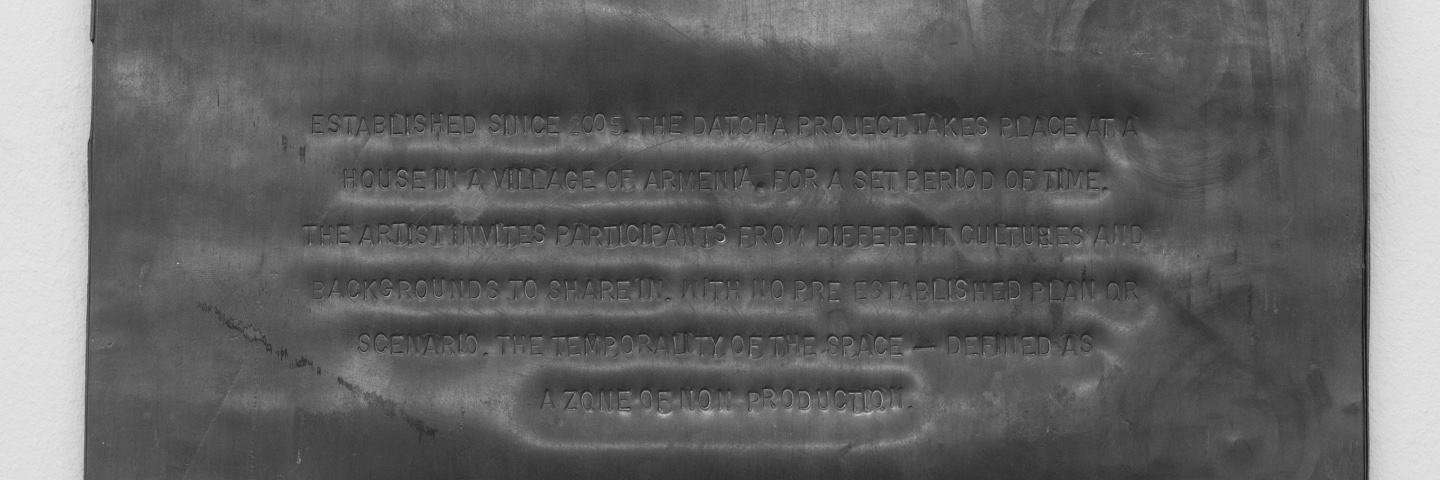
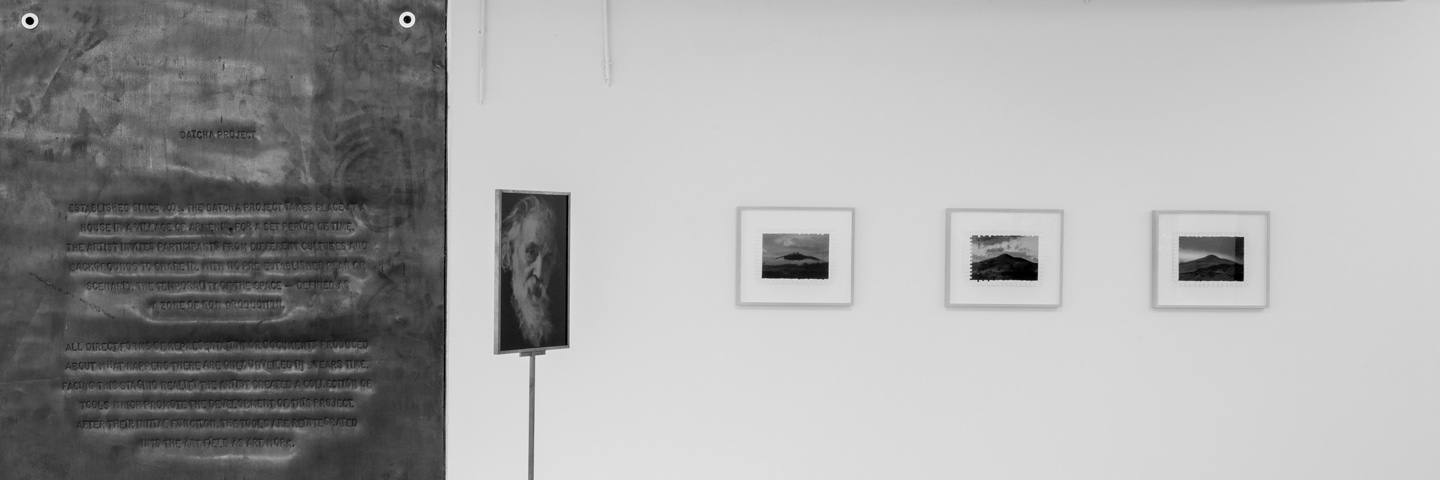
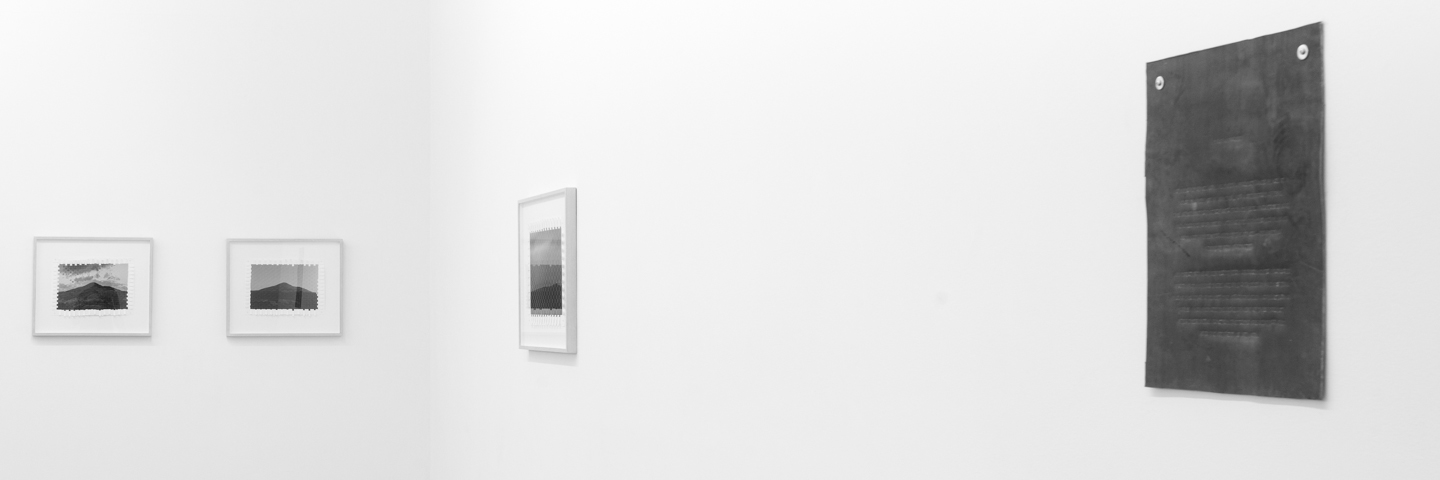
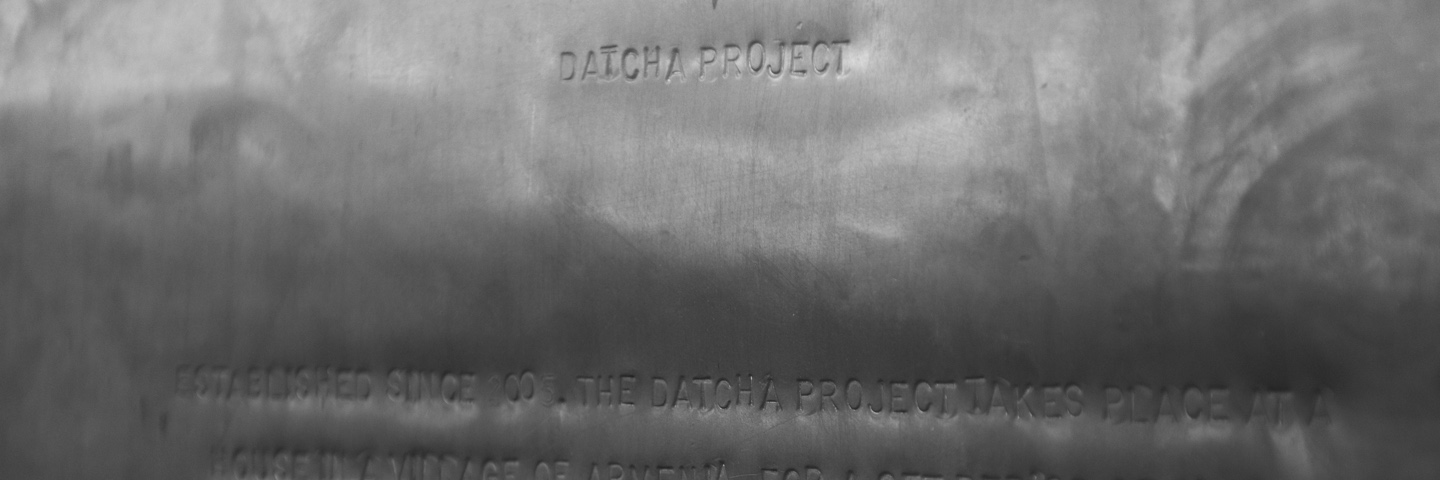
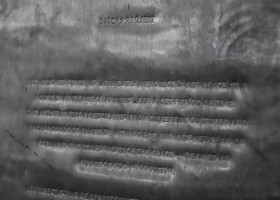
Le Statement du Datcha Project a été gravé à la main sur une plaque de plomb : « Initié en 2005, le Datcha Project se déroule dans une maison située dans un village en Arménie. L’artiste invite des personnes d’horizons et de cultures différents à partager, sans programme ni scénario, la temporalité de ce lieu – déclaré “ Zone de Non Production ” (…). »
Le Datcha Project est un lieu créé par l’artiste, où des personnes d’horizons et de cultures différents sont invitées à partager un moment dans un village Arménien. Qualifié «zone de non production», chacun y est convié à partager la temporalité de ce lieu sans programme, ni scénario. Tout élément, représentation directe ou trace produite sur ce qui s'y déroule n'est présenté au public qu'avec un délai temporel de 5 ans. Ainsi le spectateur est invité à devenir, par un jeu de déplacements, le témoin privilégié de cette zone protégée.The Statement of the Datcha Project is etched by hand on a lead plate: “Established since 2005, the Datcha Project takes place at a house in a village of Armenia. For a set period of time, the artist invites participants from different cultures and backgrounds to share in, with no pre-established plan or scenario. The temporality of the space– defined as a ‘Zone of No Production’ (…).”